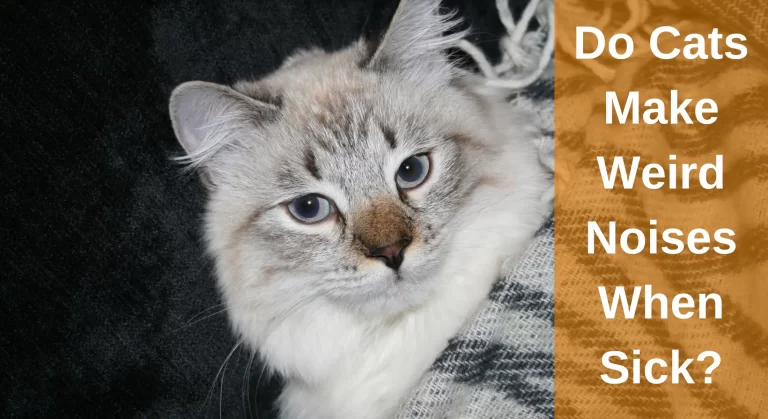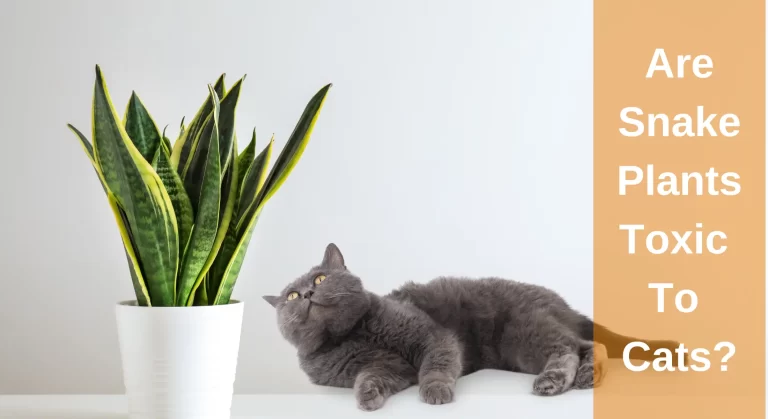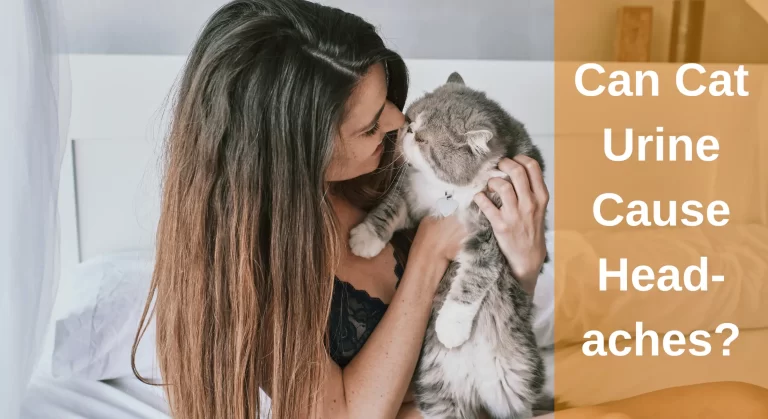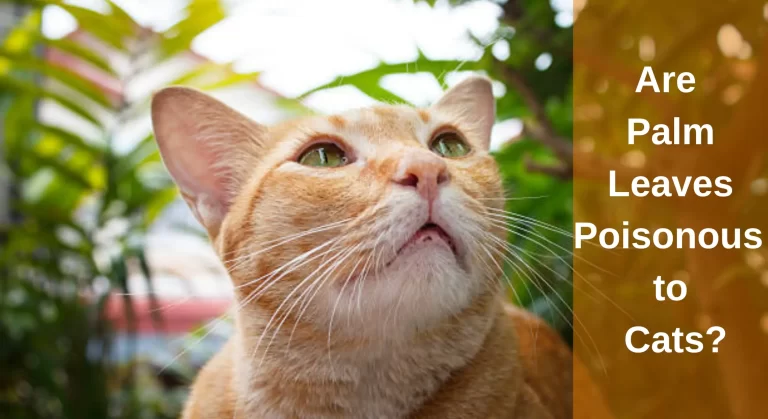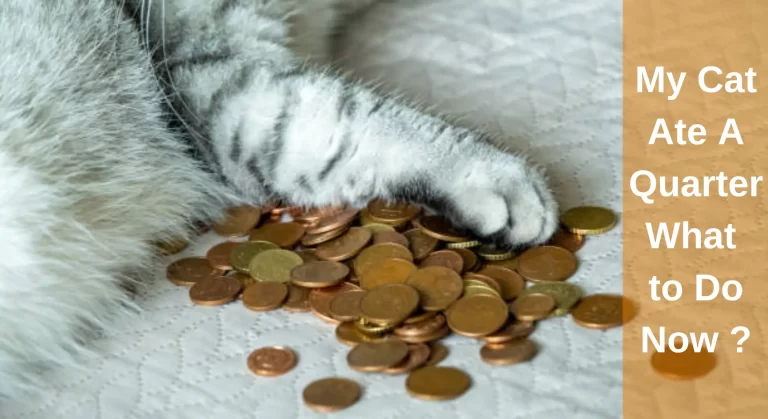Why My Cat Has Watery Eyes and Sneezes? And What Should I Do?
When one of your cat’s eyes begins to water, the cat typically attempts to shield the affected eye from a threat to its health. This might be anything, such as a virus or an unwanted object.
If your cat sneezes frequently and has watery eyes, an upper respiratory infection(URI) is extremely likely to be caused. This happens when a virus, bacteria, or fungus infects your cat’s nose, throat, and sinuses. These infections are quite common and have a wide range of severity; some show signs that are comparable to mild colds, while others have the potential to be lethal.
In this article, you will find the top reasons why your cat’s eyes are watery, how to take care of them, and also hight some of the most common eye problems.
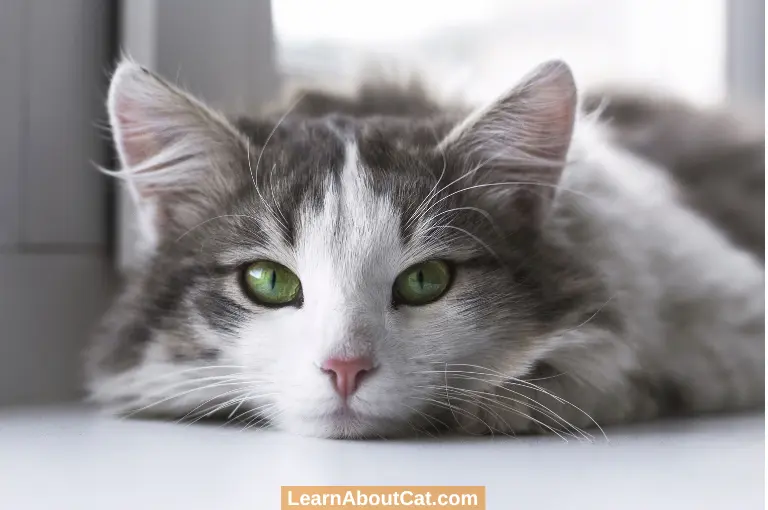
Reasons Why My Cat Has Watery Eyes and Sneezes
Your cat’s eyes are protected by a wet outer layer that washes away foreign particles like dirt. If one or both of your cat’s eyes are watering, the underlying issue is probably minor and will resolve on its own, negating the need for veterinarian assistance. But there are a number of more serious causes for your cat’s wet eyes excessively, any of which may necessitate more immediate medical care.
When your cat sneezes or has watery eyes, they are suffering from a respiratory infection (URI). Various viruses and bacteria can cause infections of the upper respiratory tract.
According to studies, 90% of URIs are commonly caused by the feline herpes virus and feline calicivirus, with 10% caused by bacteria or fungi.
1. Feline Calicivirus
Many of the symptoms of this upper airway viral infection are similar to those of FHV infections, including:
- Light sneezing and conjunctivitis
- Discharge from their nasal passages
- Sores on their tongues and lips
- Excessive salivation
- Drooling
- Decreased appetite
- Weakness and sluggishness
Some cats will develop respiratory issues, but less commonly. Cats who have feline calicivirus may also develop persistent mouth ulcers that can turn into gingivitis or stomatitis.
Take your cat to the vet if you think your cat has an FCV infection. The vet will be able to confirm if this is the virus causing his flu-like symptoms. A veterinarian will provide medication to help manage the symptoms and fight bectarial infections.
Find Out Here: Does My Cat Have Allergies or a Cold?
2. Feline Leukaemia Virus
Cats from other cats can acquire the feline leukaemia virus (FeLV). Anaemia and lymphoma are often seen in cats with the illness. The virus also impairs the immune system and raises the risk that cats may get lethal illnesses like cancer. Therefore, leukaemia is considered a condition that endangers life.
Actually, feline leukaemia is the main cause of death in cats, with trauma coming in second. The lack of an infectious treatment is mostly to blame for this. But your cat won’t necessarily pass away if it has FeLV. Cats can live as long as the subsequent infections are addressed. Of the cats who do get the virus, around 70% are able to fight it off.
You should consult your vet if you suspect your cat has contracted FeLV. It is important that you visit the vet if you suspect your cat has contracted FeLV. While FeLV cannot be treated or eliminated, vets can assist in monitoring and treating secondary infections.
You can also consider vaccinating your cat against FeLV if it isn’t already infected.
3. Bordetella Infections
A bordetella infection in my cat has caused runny eyes and sneezing. Chlamydia is the causative agent of this bacterial disease. When several cats are gathered together in one place, such as when you board your cat in a cattery while you’re away, it happens far more frequently.
It is more likely that other upper respiratory issues, like:
- Sneezing and sniffling
- Nasal blowing swollen glands and sinuses
- Fatigue and lethargy
- Depressions
- Fever
Bordetella infections are usually minor and treatable with antibiotics prescribed by your veterinarian. However, cats with an impaired immune system or young cats are particularly at risk.
The best way to prevent a bordetella infection in your cat is to make sure your cat has the latest vaccinations.
4. Feline Herpesvirus
The feline herpes virus is one of the most typical causes of upper respiratory infections in cats (FHV). It easily spreads from one sick cat to another and is extremely contagious. Your cat’s upper airways become acutely infected as a result of the virus. As a defence against the illness, this makes cats sneeze and have watery eyes. You can also notice additional typical upper respiratory infection symptoms if your cat has FHV.
This includes the following set of clinical indicators:
- Ocular discharge or conjunctivitis
- Nasal drip
- Cats produce noises similar to congestion when they are tired or sluggish.
- Diminished appetite Drooling and open mouths
Furthermore, keratitis might develop as a result of ongoing viral exposure. This is when your cat’s cornea becomes inflamed, which might lead to a partial loss of vision. FHV-associated dermatitis is a skin condition that might occasionally show symptoms. Your cat will then start to get sores on its legs, mouth, and/or nose.
It’s essential to take your cat to the vet for diagnosis and treatment if you think that your cats have FHV. Your vet will be able to provide medication to help manage symptoms and fight off secondary bacterial infections.
5. Chlamydia Felis
Chlamydia is an additional kind of upper respiratory infection. But rather than a virus, Chlamydia felis infection is what causes this illness. Flu-like symptoms are common, though, as the illness mostly affects the upper airways.
Symptoms of chlamydia felis:
- Sneezes
- Discharge from the eyes or watery eyes
- Breathing problems and coughing
- Sneezing loudly
- Being unable to eat
Conjunctivitis is one of the most obvious symptoms of feline chlamydia, and infections with Chlamydia felis account for 30% of all cases of conjunctivitis. In this circumstance, the area around the eyelids swells. When an eye is infected, it will turn pink, and there will be significant discharge. This can be thin and watery or thick and pus-like.
Whenever your cat sneezes and has conjunctivitis, chlamydia could be the culprit. Contact your veterinarian and ask for an examination. As soon as your vet diagnoses the infection, he prescribes the necessary antibiotics. The vet will also show you how to clean discharge from your cat’s eyes so that it can return to normal as soon as possible
6. Mycoplasma Infection
Mycoplasma infection is another upper respiratory ailment that can result in watery eyes and sneezing. This time, it’s another bacterial infection. However, the bacteria behave like parasites in the blood. Therefore, anaemia is most commonly characterised by weakness and sluggishness.
Symptoms of mycoplasma infection:
- Acute Exhaustion
- Decreases appetite.
- Lacking breath,
- Having pale mucous membranes and skin and feeling dizzy.
However, a number of symptoms particular to the infection site are also typically present. Sneezing, breathing problems, and coughing commonly occur as a result of the bacteria being routinely inhaled. The urinary system or wounds are still possible entry points for the bacterium. In certain situations, symptoms may instead appear as UTIs or joint inflammation.
When you observe these signs, take your cat to the veterinarian for a diagnosis. The veterinarian will then prescribe antibiotics. Taking your cat for a recheck-up after the course of antibiotics is recommended, as the bacteria can be persistent and hard to eradicate.
7. Allergies
Last but not least, an allergic cat may sneeze and have watery eyes. This is a highly likely theory if your cat continues to sneeze but otherwise appears healthy. Cats can acquire allergies to various substances, including pollen, dust mites, litter, fragrances, and chemicals, just like people can.
It’s unbelievable, but cats may also suffer from cat allergies. They sneeze in an effort to detect inhaling allergens. They help to push allergens outside the body by rapidly breathing through their noses.
You should take your cat to the vet if you think he or she has an allergy. Their allergy test will assist in determining exactly what causes this reaction.
Also Read: Why Are My Cat’s Eyes Dilated All The Time?
How Do I Treat Who Has Watery Eyes and Sneeze?
When your cat sneezes and has watery eyes, it’s easy to panic. But you shouldn’t be concerned. Using these best practices, your cat will quickly return to being content, healthy, and sneeze-free.
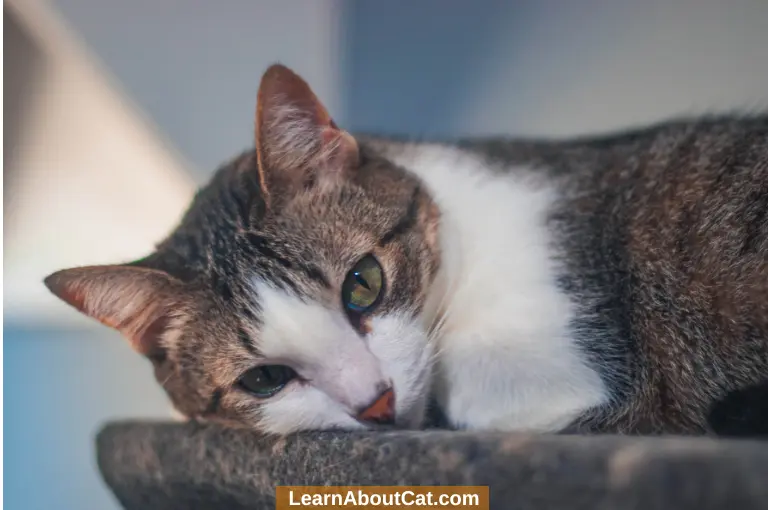
1. Remove Environmental Allergens
As was already noted, sneezing and watery eyes are additional symptoms of allergies. To address symptoms, a veterinarian may prescribe eye drops and antihistamines. But figuring out the allergy is the better line of action. Allergens include things like dust mites, cigarette smoke, cat litter, and other green cleaning products.
2. Receive the Appropriate Care
Wet eyes and sneezing are nearly always signs of an upper respiratory infection in cats. Consequently, you should always start by seeing the vet. They’ll be able to determine your cat’s condition and administer medication if required.
Treatment is not always necessary in some situations, particularly with viral diseases. Your cat might be able to manage minor viral diseases like the common cold on its own. Your cat won’t require any medications or treatments when they feel normal again in a few weeks. However, cats that are older or who already have a medical condition may have trouble and need more help.
Check Out: Why Is Cat Has Dry Nose And Not Eating?
3. Elimination Diets
Environmental allergies are only a small part of the issue. Food allergies are also rather common in cats. You might be surprised to learn that the protein in cat food frequently results in an allergic reaction. Common examples include chicken and beef.
Cats must consume meat in order to thrive. This suggests that they are physically dependent on meat in order to survive and that their bodies would not function otherwise. It would not be good to just cut off all meat from their diet. Instead, you need to identify the precise food element that is triggering an allergic reaction.
4. Examine Vaccination Records
When you see your veterinarian, enquire about vaccinations. With immunizations, your cat can be protected against a number of feline respiratory diseases. The majority of cats will get this vaccination as part of their basic vaccinations when they are kittens. The feline herpes virus and feline calicivirus vaccinations are usually given together.
The majority of other URIs, such as Bordetella, Chlamydophila felis, and the feline leukaemia virus, may be protected against by immunising your cat. Even when the kittens are young, buying them is suggested.
Interesting Reading: Can You Use Human Eye Drops on Cats?
When Should I Worry About My cat’s Runny Eyes?
It’s time to schedule an appointment with a veterinarian if you discover that your cat’s eyes have been watering for more than a day or two with no improvement or if their symptoms are getting worse.
A specialist or veterinarian can adequately examine your cat’s eyes and come up with a diagnosis and treatment plan. With the correct veterinary care, your feline companion’s discomfort or suffering might be lessened, and more serious issues could be averted.
Also, Check Out: Why Does My Cat Blink One Eye?
Cat Eye Problems: Symptoms of Eye Issues in Cats
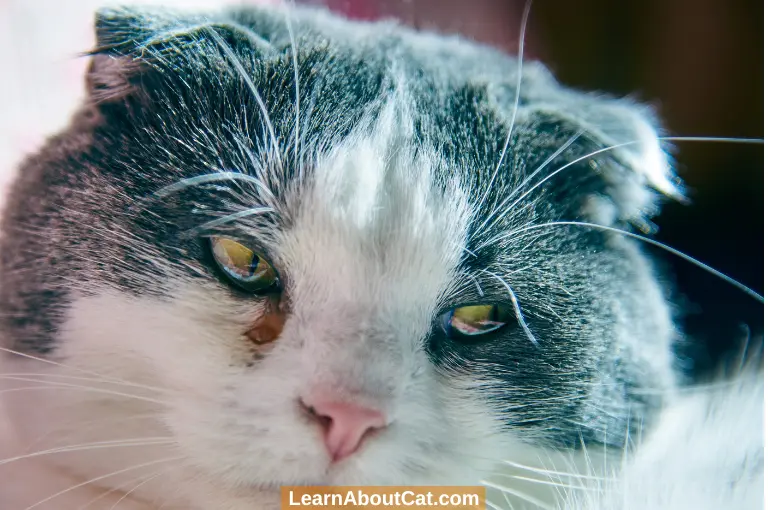
1. Blinking, Squinting, and Pawing at the Eyes
Your cat may be experiencing discomfort due to a blocked nasolacrimal duct or a foreign object in its eye (tear duct). Although less common in cats than in dogs, nasolacrimal obstructions can cause tears to overflow and pour out of the eye.
2. Being Congested and Sneezing
If your kitty buddy has runny eyes, sneezes, or otherwise displays symptoms of a human cold, they may have an upper respiratory infection or a feline cold.
The majority of feline colds resolve on their own after a week. However, you should book an appointment with your veterinarian immediately away if their symptoms increase or don’t go away at that time.
3. Swollen Eyes
If your cat is displaying overt signs of pain, the eyeball is protruding, or there is visibly visible swelling around their eyes, take them to the vet straight once to have their eyes examined for glaucoma.
Cats with glaucoma symptoms require urgent medical attention from a veterinarian. This agonising condition can appear out of nowhere and worsen very fast. In most cases, by the time symptoms appear, a sizable percentage of the cat’s vision will have already been irreparably lost.
4. Swollen, Crimson Eyes
Veterinarians say that conjunctivitis is most likely to blame for your cat’s red, irritated eyes (otherwise known as pinkeye). Your cat may also develop conjunctivitis if its eyes are swollen and its sensitivity to light has increased. Conjunctivitis, an eye illness that can be brought on by an allergy to the feline herpes virus, is also common in cats.
Although conjunctivitis is typically easy to treat, if it is not, it may get worse. Therefore, if your cat’s eyes have turned red and watery, it is always advised to visit your veterinarian. Depending on how badly your cat’s eyes itch, your veterinarian may advise using eye drops or an ointment.
5. Discharge that is Yellow, Green, or Sticky
Goopy or sticky discharge from your cat’s eyes is a sign of illness, just as sick eyes are in humans. While green or yellow eyes are likely bacterially diseased, clear discharge from the cat’s eyes might be a symptom of a virus.
As soon as you find an eye infection in your cat, you must immediately take him to your doctor or expert to prevent the formation of more serious illnesses and problems. Ointments or antibiotic eye drops may be used to treat your cat’s eye infection.
Also, Check Out: Disoriented Cat with Dilated Pupils, Why And How To Help
Frequently Asked Questions
What home remedy can I give my cat for sneezing?
The use of a vaporizer can alleviate symptoms of sneezing and stuffiness.
A saline spray can also help with sneezing; consult with the vet before using.
Should I be worried if my cat’s eye is watering?
Cats with persistent watering eyes, or cats showing signs of pain or infection, should be seen by a vet.
What can I give my cat for sneezing and watery eyes?
The following options can be used to treat a sneezing cat:
Anti-nausea medication.
Humidifiers.
Air purifiers.
Antihistamines.
Steroids.
Decongestants.
Surgery (in serious cases).
Final Thoughts!
Your cat will most likely have an upper respiratory illness the majority of the time. Several of the illnesses mentioned on this page can cause these. If your cat exhibits any symptoms, you should note them and take him to the doctor so they may recommend a course of treatment. Get your cat immunised against the two deadly URIs, feline herpesvirus and feline calicivirus, so they are protected from them.
Allergies are the sole other cause of watery eyes and sneezing. At any point during their lifetimes, cats might develop allergies to items they have previously tolerated without any problems. As always, a veterinarian should be contacted. They can determine the substances to which your cat is hypersensitive and offer advice on how to manage these allergies successfully.
Who is Isabella?
My name is Isabella, and I am a dedicated and knowledgeable cat enthusiast. With years of experience caring for cats and a deep love for felines, I made a mission to help other cat lovers navigate the challenges of cat ownership.

